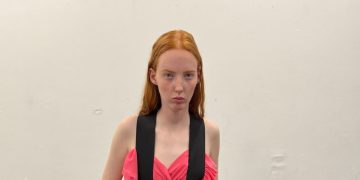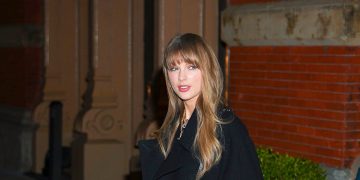While it’s likely enough that you’ve encountered tales of rivalries between best friends or biting portraits of coastal arts scenes, you’ve surely never read anything quite like Anika Jade Levy’s new novel Flat Earth. “Renata Adler’s Speedboat for the Adderall generation” may sound like a lot to live up to, but Levy more than pulls it off, crafting a tale of grad-school metafiction antics, right-wing romantic intrigue, sugaring and quasi-sororal betrayal that’s almost impossible to put down.
To mark Flat Earth’s release this week, Vogue asked Levy to round up seven of the books that helped her write her novel—and that continue to inspire her work.
Male Fantasies by Klaus Theweleit
This two-volume cult text dissects diaries of early-20th-century German soldiers to explore why fascism feels so erotic to its participants. I read it like a field guide to the modern internet male: the podcaster, the dissident thinker, the guy who treats misogyny like a mystical practice.
Sleepless Nights by Elizabeth Hardwick
Imagine this: your husband, the most famous poet in America, publicly cheats on you with Clarice Lispector. Then you write one of the most beautiful and lawless novels of the century. It’s autobiographical, but it doesn’t acknowledge his infidelity. Hardwick assembles fragments of memory, gossip, and observation into something intimate and untouchable, and she writes about loneliness in a way that makes solitude feel like an art form. I read it to remind myself that plot is optional, but tone is not. Flat Earth borrowed her detachment—the way she writes emotion like reportage. Sleepless Nights is a picaresque like no other, a glittering portrait of an episodic personality.
Why Did I Ever by Mary Robison
Robison was a disciple of Gordon Lish before she fired him to take speed and drive around the country, which is largely what this book is about. While she drove, she talked into a tape recorder, pulling over to transcribe what she’d written into a portable typewriter she plugged into the car’s cigarette lighter. Written in hundreds of numbered fragments, Why Did I Ever? is a road novel about an unserious genius trying to outrun both the IRS and herself.
How Should a Person Be? By Sheila Heti
Heti writes about friendship and art-making with feral sincerity, like she’s testing how much of herself she can expose before the performance collapses. It’s a book about wanting to be witnessed and wanting to disappear. It also happens to be one of the great Jewish satires of the 21st century; the Sheila of the novel is being spiritually—and sometimes literally—abused by a man named Israel, which feels too on-the-nose to be symbolic, and that’s the point.
10:04 by Ben Lerner
After I finished a clumsy first draft of Flat Earth, my best friend Madeline read it and we spent a few hours talking honestly about everything that was wrong with it. She was trying to make a point about how the meta-fictional aspects weren’t working yet, but I couldn’t understand what she was saying. Then she ripped out the first page of her copy of 10:04 and said: “Write it like this.”
Convenience Store Woman by Sakaya Murata
I love how Murata treats conformity like a corporate religion. Convenience Store Woman is about a person who becomes pure function, and I recognized that impulse in myself: the urge to disappear into an archetype.
The Babysitter at Rest by Jen George
The final story in The Babysitter at Rest opens: “I was sexually attractive, which is highly valued in college and art circles, as well as other hierarchical scenes mimicking the structure of capitalism wherein older men with large hands finger younger women who read novels and possibly write or paint or play an instrument and make declarative statements such as, ‘If I had to work at an office in midtown from nine to five I’d jump off the George Washington Bridge,’ or, ‘I’ve never been out of the country.’” The loosely interchangeable narrators in these five stories are at odds with technology, morality, and materialism. In the first, a woman turns 33 and is assigned an ethereal, androgynous Guide to shepherd her into adulthood. She falls in love with the Guide, whose arrival and disappearance foretell all the failures of middle age: loneliness, poverty, dental problems. So many ideas and images in this book are unforgettable: a tarot deck depicting battered women designed by an heiress, an elite New York art school where students are tasked with digging horse graves, a forever baby. Reading it felt like being inducted into a secret society of women who know the joke isn’t funny, but tell it anyway.
#Required #Reading #Books #Inspired #Anika #Jade #Levys #Flat #Earth














.jpg)
.jpg)
.jpg)

.jpg)
.jpg)


